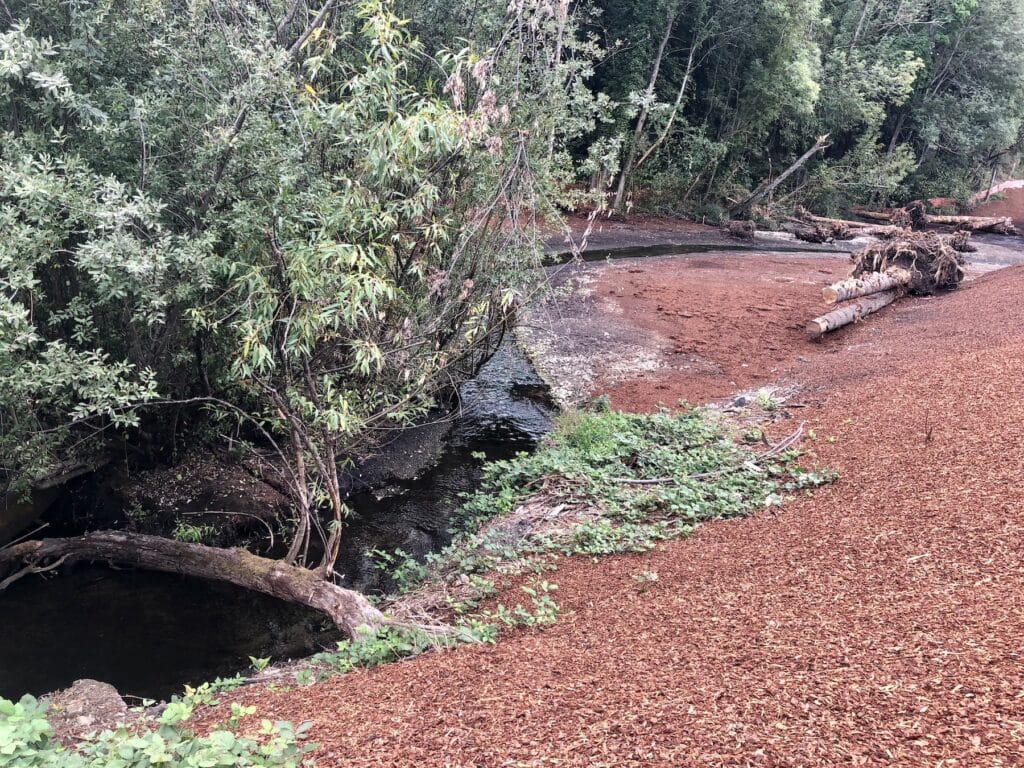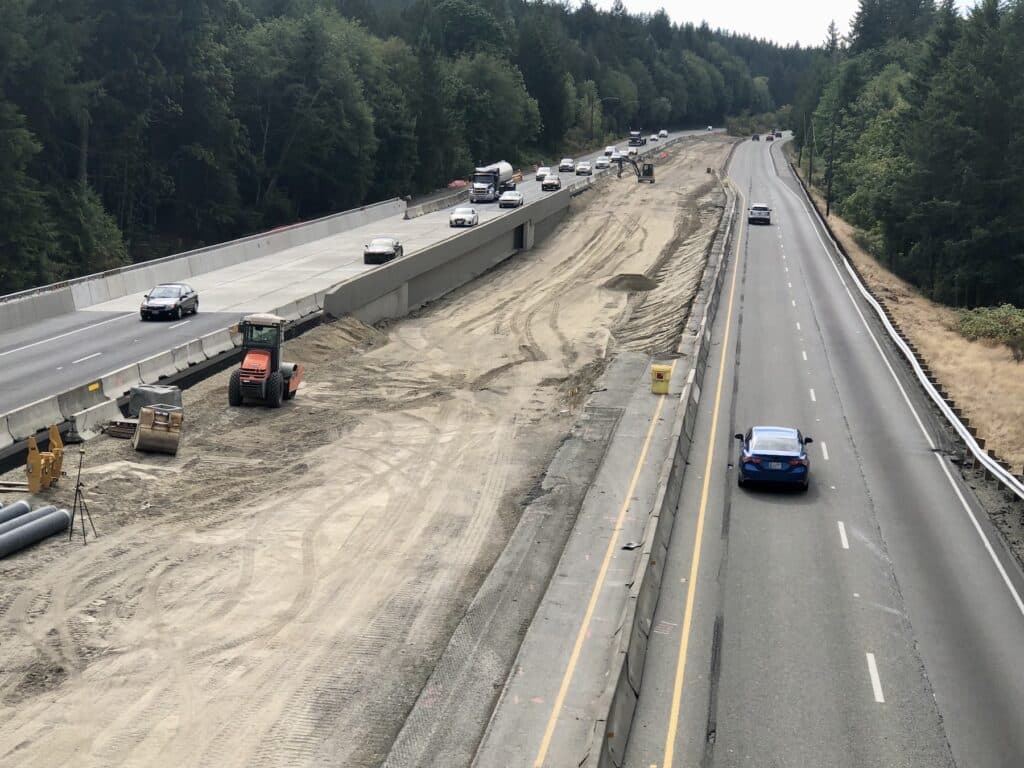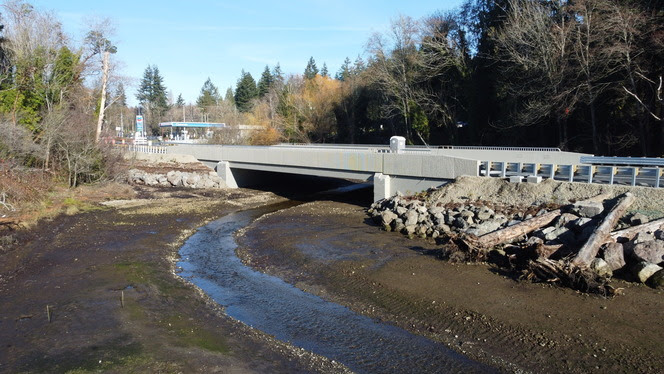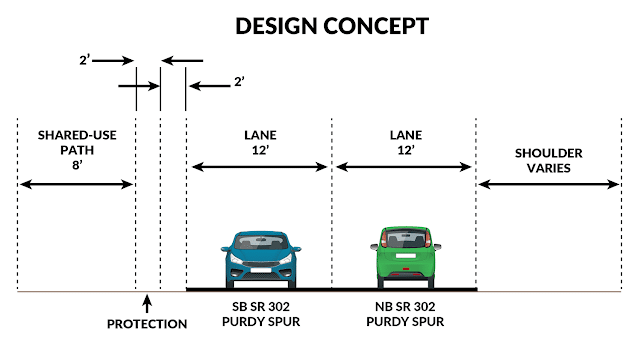Community Environment Government Transportation
Highway 302 Spur bridge opening Saturday
Crews plan to open the new Highway 302 Spur bridge over Purdy Creek on Saturday, Dec. 2. The fish passage project won’t quite be finished, but near enough to accept motor vehicle traffic.
Last April, the state contractor for Washington Department of Transportation closed the route, also called Purdy Drive, and detoured traffic along Purdy Lane so it could replace a 6-by-6-foot concrete box culvert with a 77-foot-long bridge. The culvert obstructed 33% of fish because of low stream depth and high flow rate, according to Washington State Fish and Wildlife. The creek is home to chinook, coho and chum salmon, coastal cutthroat, steelhead and resident trout, the department says.

The new stream alignment takes a more meandering path than before. This was taken in September before the bank was planted. Photo by Ed Friedrich
This past summer, workers blocked off the old culvert and created a new stream bed. They have recently seen chum salmon heading into the creek from Burley Lagoon to spawn.
Students getting parking area back
Once the bridge opens, crews will remove paved shoulders added to Purdy Lane for the detour. The work will require nighttime closures. The “no parking” signs will be taken down, and students and staff at Peninsula High School can again use the area for overflow parking.
Though the bridge will be open, crews still have work to do. Paving requires warmer temperatures for the best, longest-lasting driving surface, and the weather didn’t cooperate. Crews will return in the spring to finish paving the Highway 302 Spur, Purdy Lane and some of 144th Street, and apply final markings.
Pedestrian path a late addition
A protected shared-use path for walkers and bicyclists also remains on the to-do list. It was added, at the community’s request, after the project was designed, advertised and awarded. The bridge is big enough to change the plans after the fact. The path will be on the west side, protected from traffic by a concrete barrier.
The new Highway 302 spur bridge is one of three Purdy Creek fish passage improvements combined into one $41.6 million project. The other two are replacing 5-foot-diameter pipe culverts beneath eastbound and westbound Highway 16 with 206-foot-long bridges.
One more bridge to go
In October 2022, work crews moved the westbound lanes into the median to construct the new westbound bridge. It opened on Aug. 15. Since then, traffic shifted into the median for work on the eastbound side. The state expects that to be completed by the end of 2024.
Shafts that provide the foundation for the bridge were drilled a couple weeks ago. Workers are now building the walls, girders and road features of the new bridge, according to WSDOT spokeswoman Angela Cochran. The next milestone will be when the girders are set in the spring. During that time, crews will close eastbound Highway 16 for several nights and place a detour around the work zone.

The completed westbound Highway 16 bridge on the left in September with traffic about to be shifted to the median for work on the eastbound bridge. Photo by Ed Friedrich
During the summer fish window, when crews are allowed to work in the water, they will carve out a valley beneath the bridges, create a new, open stream bed and block off the old culverts. The valley will also serve as a wildlife crossing.
The three new bridges will help salmon reach spawning grounds along Purdy Creek that flows 6.5 miles through rural residential property to about Burley-Olalla Road.
A 2013 federal court injunction requires the state to speed up its fish passage work in Western Washington. It must restore access to 90% of blocked habitat by 2030.


